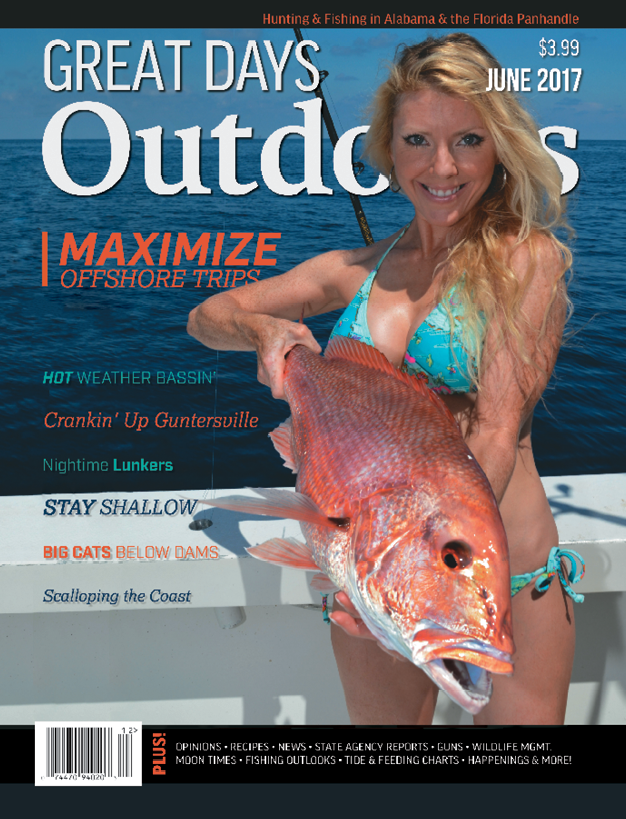For anglers who are not familiar with fishing near the big dams of north Alabama, first exposure to the roiling, powerful currents of the water below the dams can be very intimidating. These dams create some powerful, difficult to navigate currents and rough waters. Truly, fishing below the dams takes some care, especially when heavy water is being released and the currents are ripping. Anglers always need to be extra careful. It’s a good idea – and a legal requirement for some of the dams – for anglers to wear personal floatation devices when fishing close to the dam. Those strong waters make a great environment for catching big catfish. Those big Alabama catfish are there for one reason. They come to the moving water to find food.
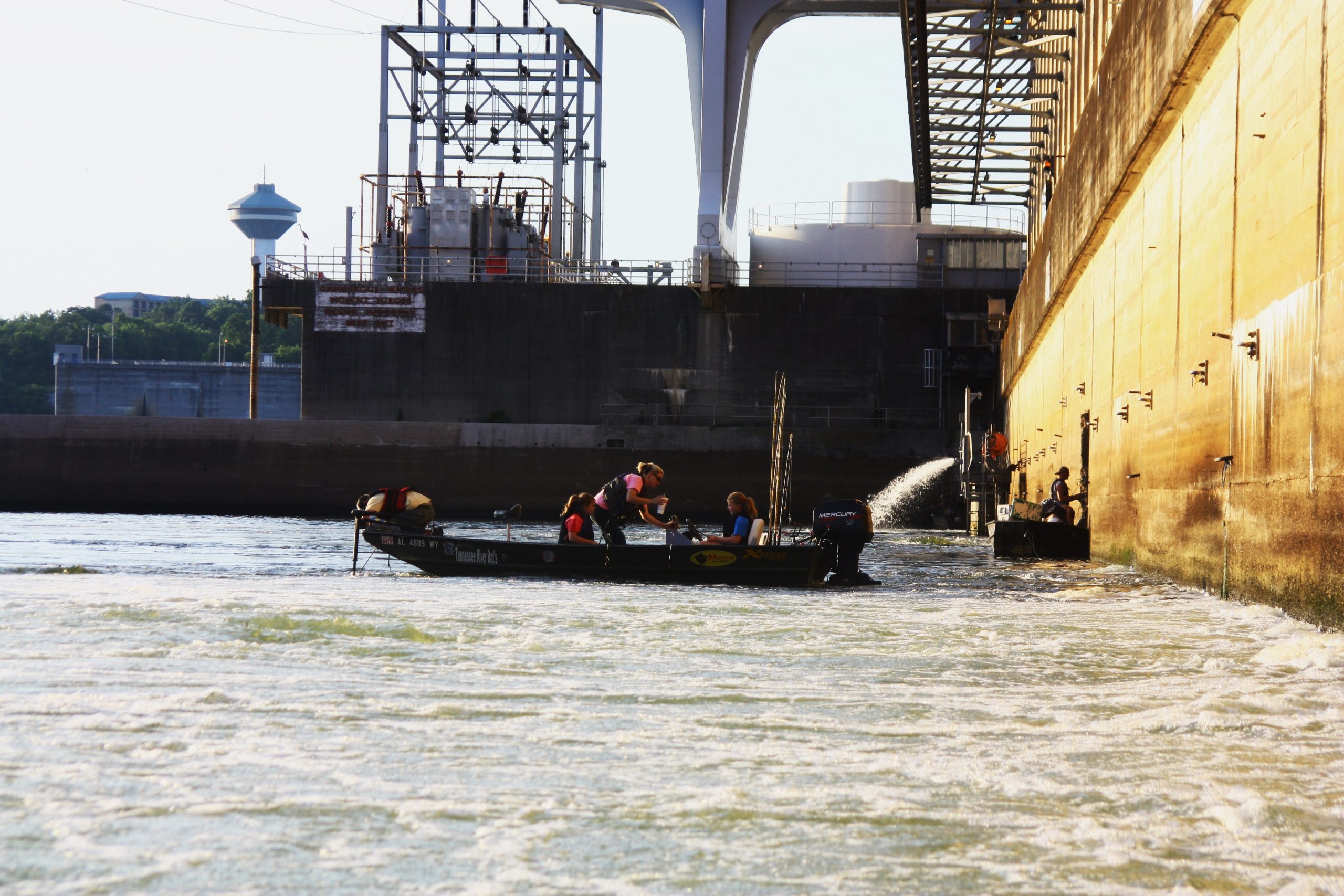
Not many guides know as much about fishing around the big northern Alabama dams as our buddy, Capt. Brian Barton. Captain Brian grew up fishing these rough waters as a commercial fisherman catching catfish for the market. He knows where to find the cats and how to catch them.
Captain Brian says, “If I’m seeking big cats, I like big chunks of fresh cut skipjack herring or shad. For smaller fish, smaller cut baits and shad guts are best. If that’s not available, chicken livers, worms and shrimp will always provide a few bites.”
Rigging Right
Anglers need to be flexible when it comes to selecting specific rigs and hook arrangements for various water conditions. These various rigs make a big difference when the water is doing certain things.
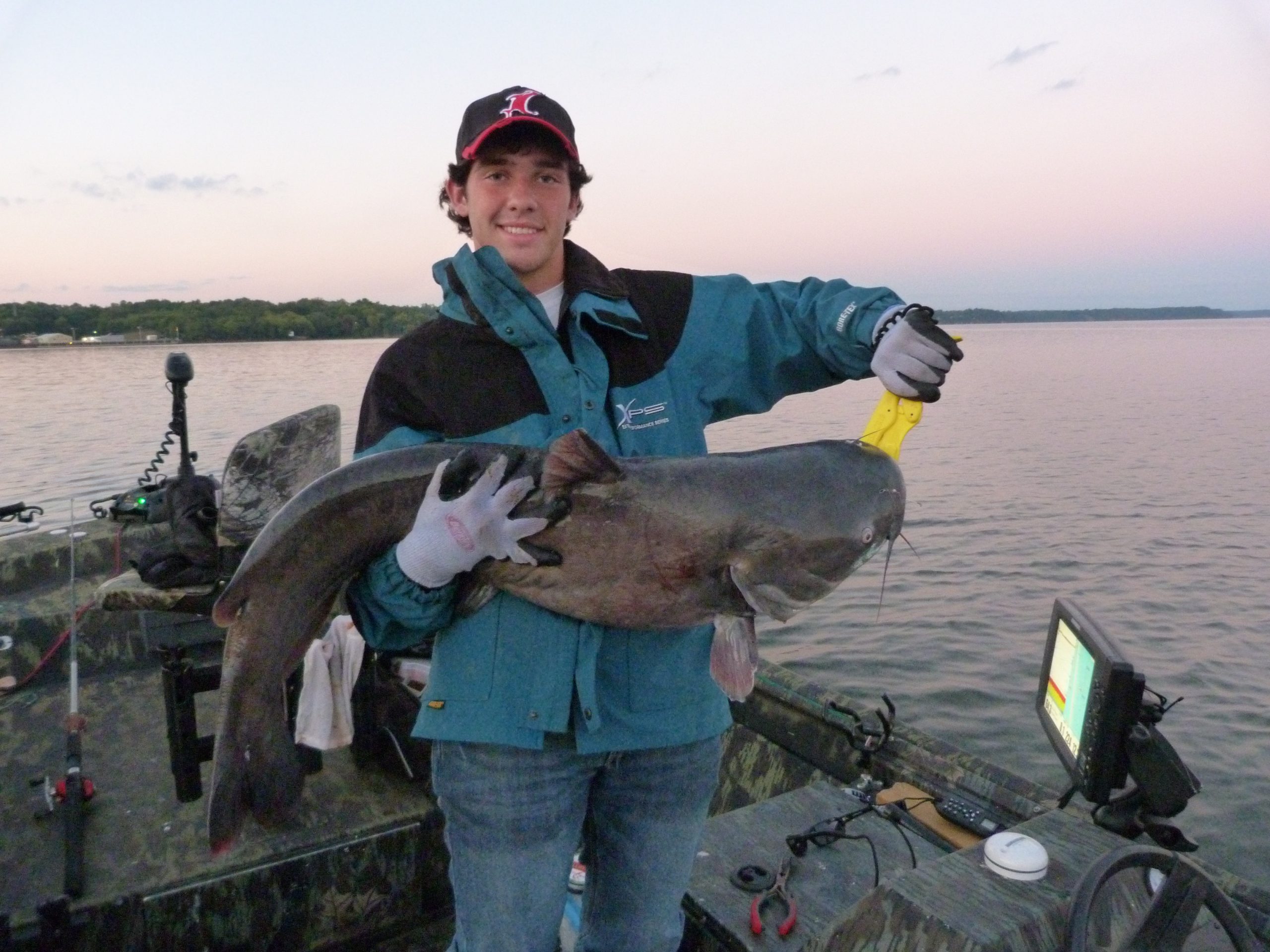
For rigging up, Captain Brian tells us, “I use three different rigs for fishing below dams. I use a slip-float rig for fishing slack water areas. I set the float about two feet shallower than the water depth. Another rig I use is the Santee Rig with a 3-way swivel. I use an 18-inch leader to my sinker and a 6-inch leader to my hook. I use this rig when bumping bottom and fishing vertical situations. Finally, the third rig I use is a bait-walking rig. I place a bank sinker directly up the line approximately 24 inches above my hook. I use this rig when anchored and ‘walking’ my bait along the bottom behind the boat.”
For bait, Captain Brain says, “I dip shad from the wall of the dam. Skipjack are caught on sabiki rigs cast across the turbulent waters of the dam.”
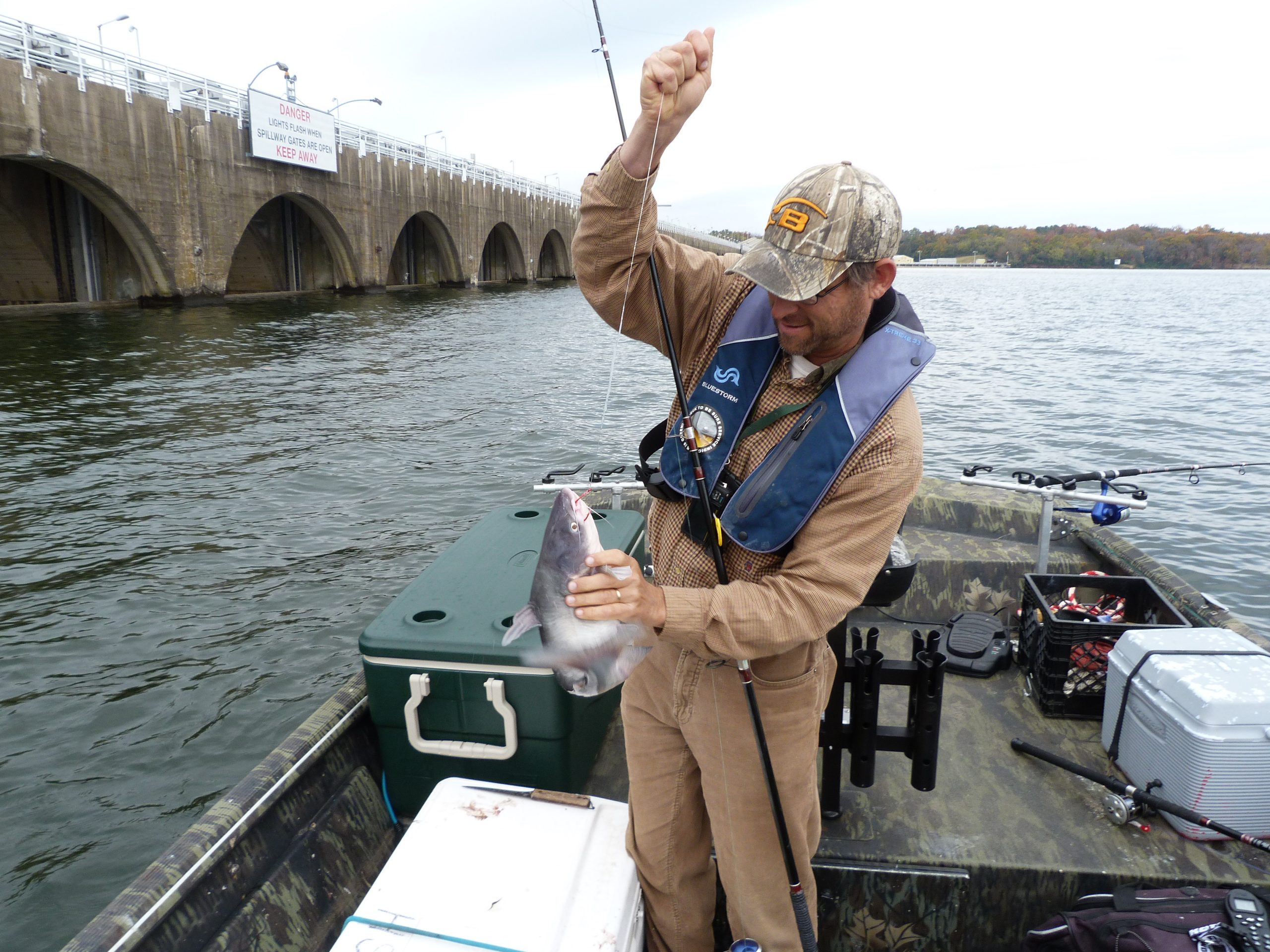
One thing is certain. When fishing for these big Alabama catfish in strong water conditions, the rods, reels and line must be up to the task. This is no place for ultralight gear. Anglers need to use rods and reels that can handle and stop big cats when they take a bait and run for underwater structure to hang up and break the line.
Choosing the right gear is important when it comes to catching big catfish below dams. Captain Brian advises us, “I have seen countless big fish lost because of undersized gear. I use B’n’M Silver Cat Magnum rods with Shimano 6000 series reels. I spool with 80-pound-test Vicious braid and I use a 60-pound-test monofilament leader. This rig will land any fish I hook up, while at the same time it is suited for catching eating-size fish as well.”
Where to Go
Whether an angler chooses to fish below Wheeler Dam, Wilson Dam, or Pickwick Dam, anglers can find the best places to tie up and drop a big bait. The big north Alabama dams are very similar in the way currents and holding pockets are created when the water is released through the dam.
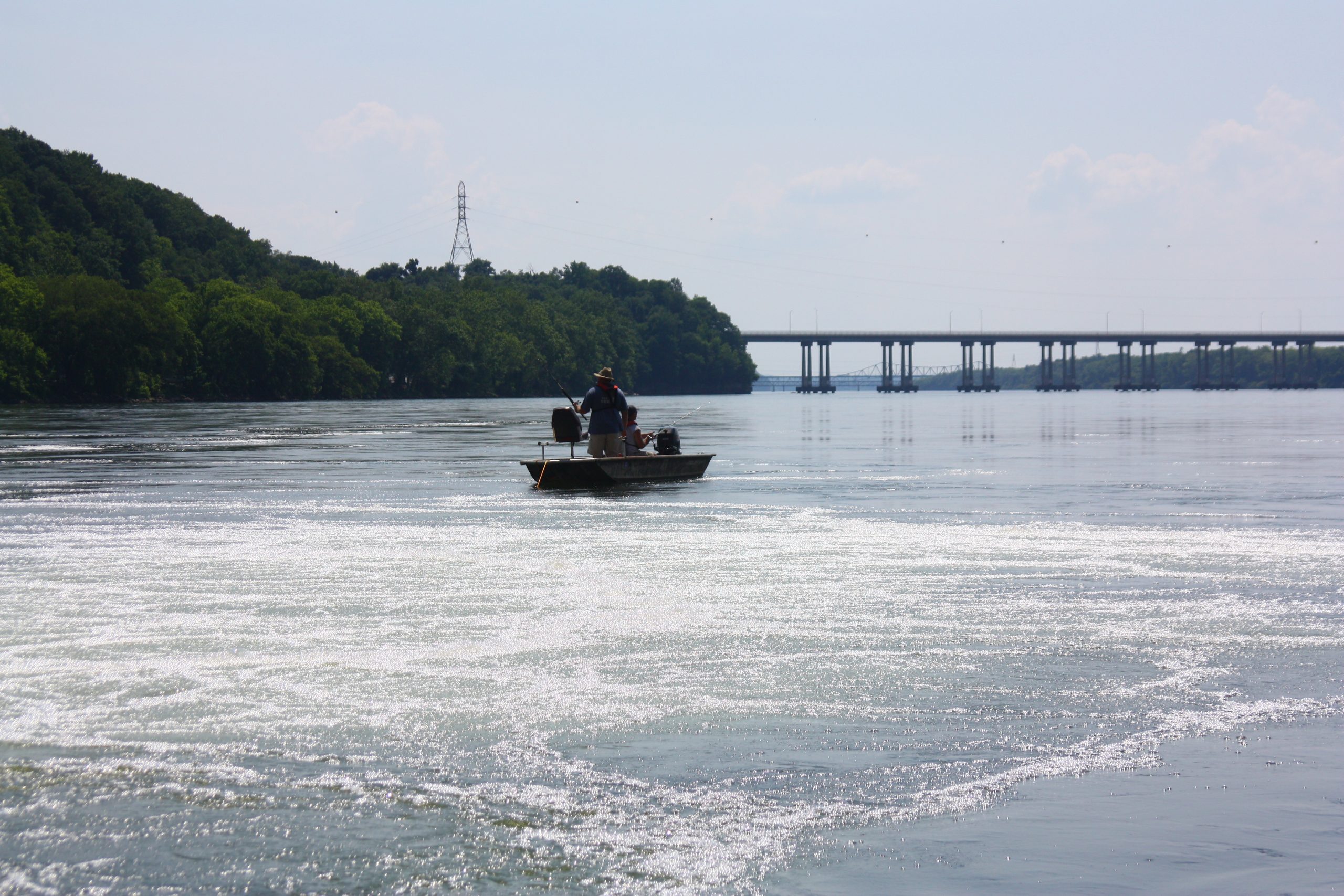
Captain Brian says, “Some big cats are below the dams all year long. However, in June your best bet is to target smaller or eating size fish. Catching 50 to 75 cats a day is common when fishing the tailraces in June.”
No matter what dam is being fished, there are specific locations below the dams that are better. Captain Brian says, “I like eddy currents where two or more turbine currents come together. Bait gets pushed into eddy pockets making them easy picking for big, hungry cats. Also, slack waters adjacent to current areas can be good. Look for deeper holes and isolated wood or rock piles.”
Anglers can observe the way that currents meet and mingle as water is released through the dam. These meeting areas often create pockets where anglers can get baits to the bottom without the line and bait being swept downstream. These pockets of mingled water allow big Alabama catfish to hold a good feeding position without expending a lot of energy.
What to Expect When a Big One Comes to Visit
Of course, the real reason to catch big catfish is not to admire their looks. They’re big old ugly fish. However, a 50-pound or larger catfish is a beast of a fish that pulls hard, fights long and doesn’t come to the boat easily. It’s that strike and run that makes anglers go after big cats.
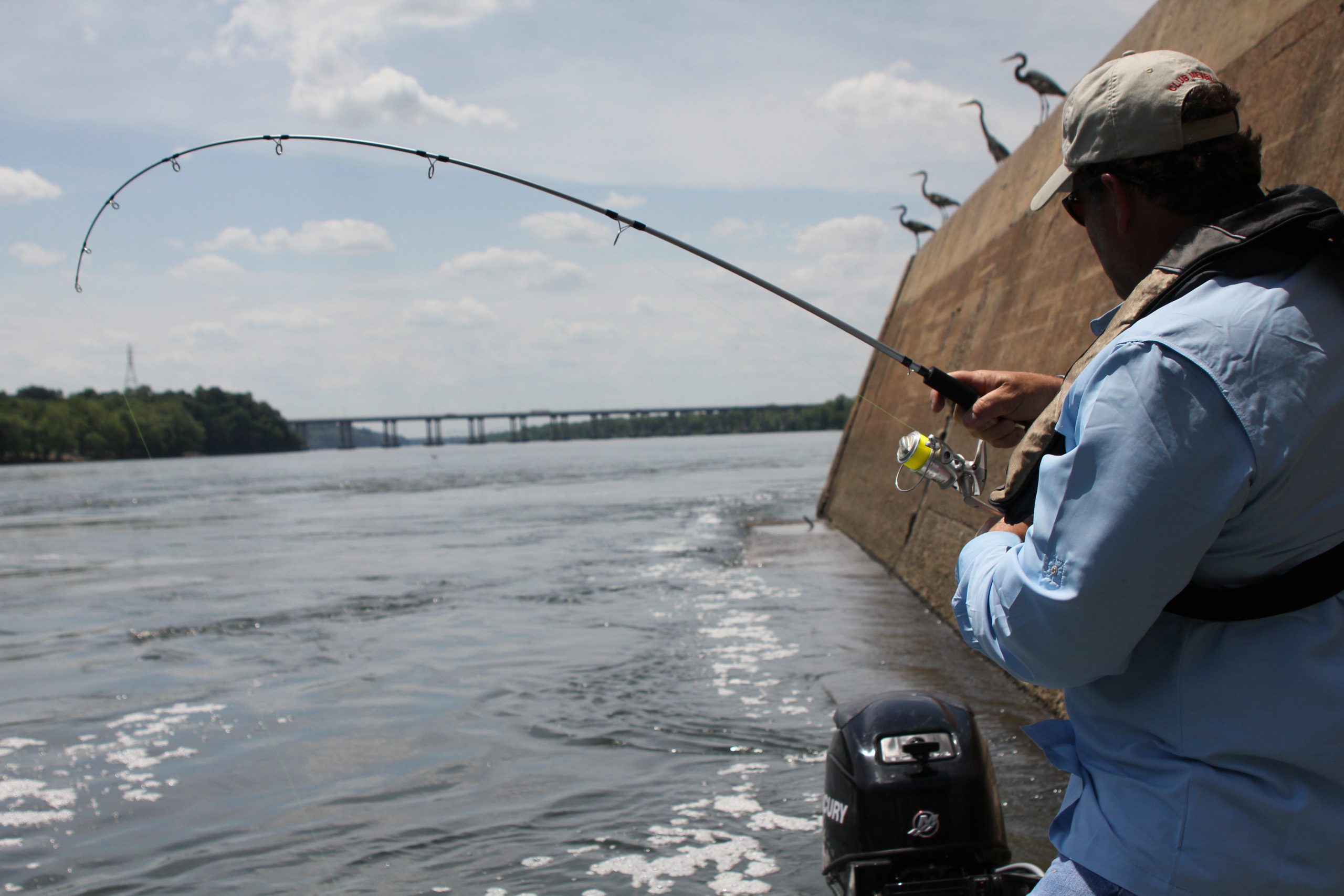
Captain Brian Barton says, “Big cats typically slam the bait with a rod-jarring hit. The fight of a big cat in a 7- to 10-mile per hour tailrace current is one of the best rushes an angler can get in freshwater fishing.”
Like all fishing, going after the extra-large cats of Alabama is not as effective at some points of the day and season as others. It makes a big difference what time of day anglers go on the water after big cats. Keep in mind that catfish are very light sensitive.
As far as when to try catching big catfish below the dams, Captain Brian says, “The best time of day is basically the first two and last two hours of daylight. Catfish are nocturnal by nature so low-light conditions always best. Rainy or cloudy days are an exception. The presence of current always overrides the sun, in my opinion. Dams generating current stimulates baitfish to group up in eddy currents, therefore stimulating big catfish to feed.”
The short message here is simple: light conditions are important. Low-light conditions are best, but water movement is more important. When the water is moving through the dam, it’s time to go fishing for big cats.
Does and Don’ts
Something to keep in mind about fishing for big Alabama catfish, they are not shy about eating when a meal presents itself. This means that when an angler goes after big cats below the dams, patience is not often required. The big ones will eat and they’ll eat quickly when a bait drifts before them. Anglers can expect fast bites. If bites don’t come immediately, then the big cats are just not there. It’s time to move.
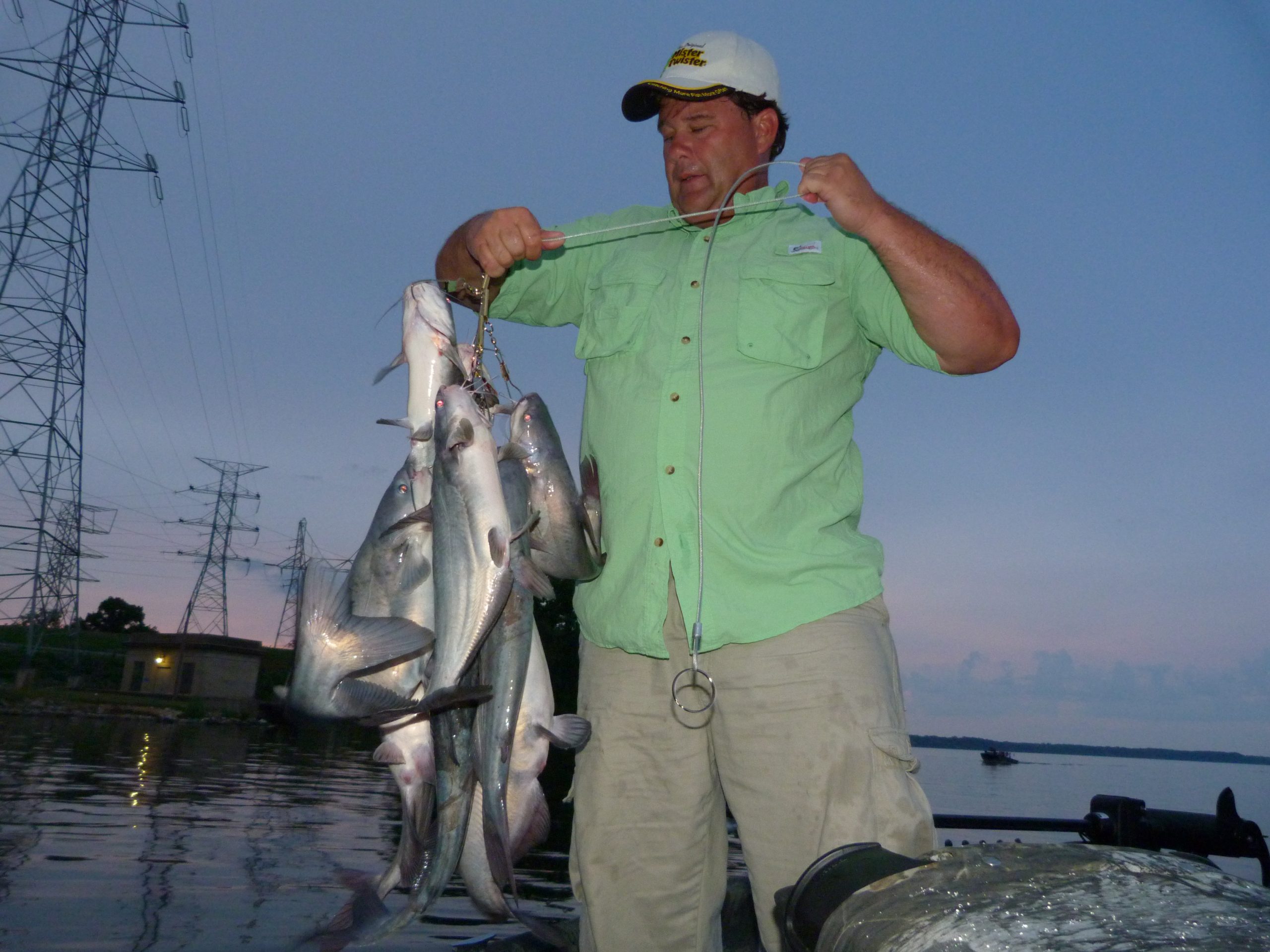
Captain Brian tells us, “If catfish are there and feeding, they are going to bite within minutes. If you sit on a spot for 10 minutes without a bite, move to another location. On the other hand, if you find fish, stay with them until they quit biting.”
When it comes to giving his best advice to anglers looking for catching big catfish, Captain Brian says, “My best advice for catching cats below dams is to keeping moving until you find fish.”
Important Contact Information
Capt. Brian Barton
256-412-0969
brianbartonoutdoors@aol.com
This article first appeared in the June 2017 print issue of Great Days Outdoors Magazine. For more great hunting and fishing content for the deep South, subscribe to Great Days Outdoors print and digital editions or click the image to download this issue.


